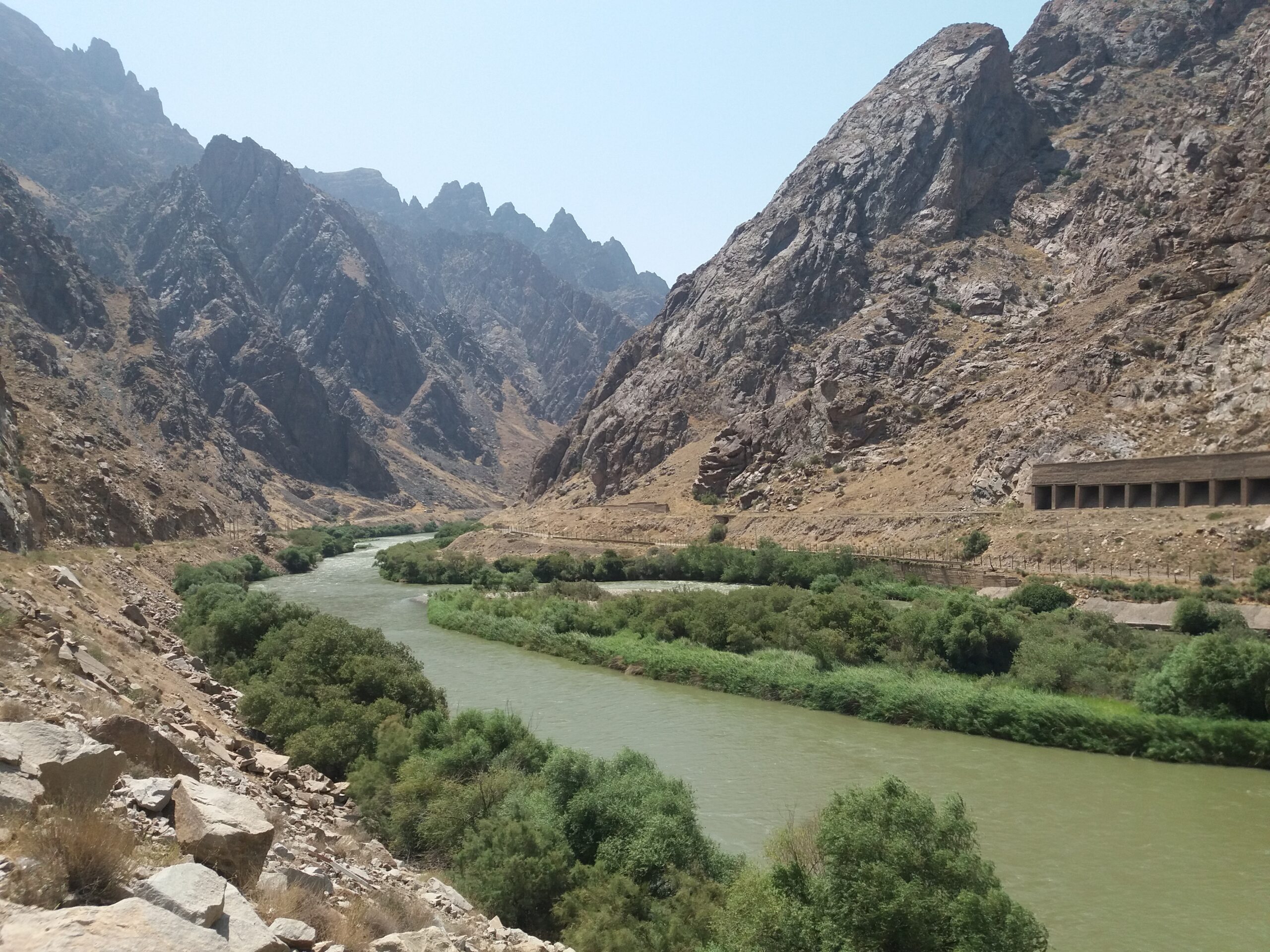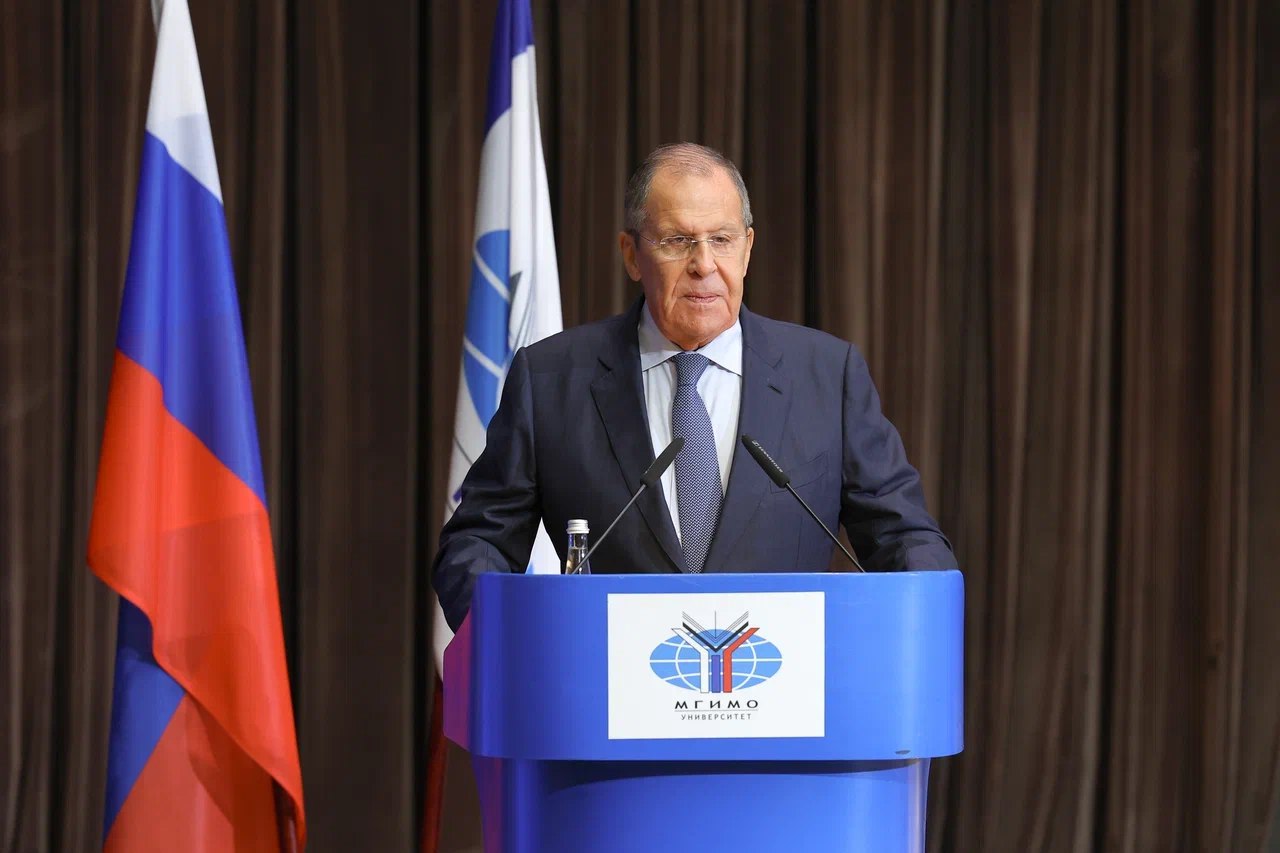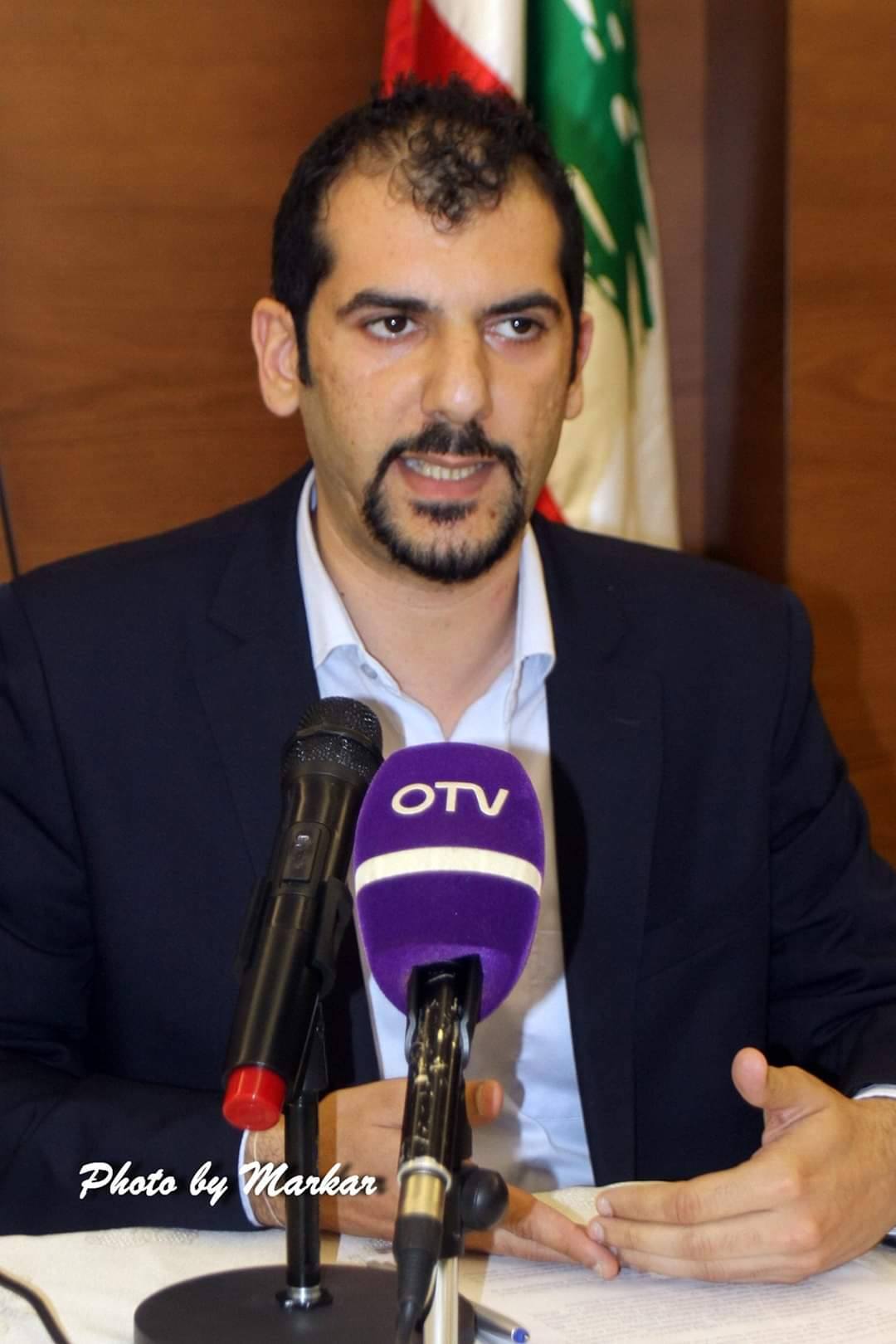On August 7, 2024, Elchin Amirbayov, President Ilham Aliyev’s senior envoy for special assignments, told Radio Free Europe/Radio Liberty that Baku had agreed to withdraw the issue of the “Zangezur Corridor” from Armenia-Azerbaijan negotiations and “refer it to a later stage.” This statement put Russia in a difficult position, as it had aimed to control the transit routes between Armenia and Azerbaijan, according to the November 10, 2020 trilateral statement signed by the heads of state of Armenia, Azerbaijan and Russia. As such, Russia attempted to revive the issue but met Iranian opposition. This article will highlight U.S. involvement in containing Russia’s influence in the South Caucasus, Russia’s objective behind bringing back the corridor issue and Tehran’s harsh stance against Moscow.
U.S. involvement
On September 4, Armenia’s Foreign Ministry confirmed that there have been talks about the possibility of a private company controlling a route connecting Azerbaijan proper to Nakhichevan via Armenia. Armenia’s deputy foreign minister mentioned that the idea is still under discussion. Meanwhile, information has been circulated on social media that this company could be registered in the U.S. or Europe. While these are rumors, would the U.S. be interested in such an idea?
From the U.S. perspective, a peace treaty between Yerevan and Baku without the involvement of Russia is a key element to contain Russia’s influence in Eurasia. The U.S. views this process “not merely as a regional matter but as a strategic pivot that could shift the balance of power and connectivity in the South Caucasus and Central Asia,” especially in terms of trade and energy connectivity.
U.S. Deputy Secretary of State James O’Brien has already made clear the importance of this “corridor,” as it hopes to reduce Russia and China’s influence in the South Caucasus. The U.S. official recently stated that Central Asian countries are engaging in trade with the outside world either through Russia or China. As an alternative, they have to trade via Azerbaijan. He added that a road through Azerbaijan and Armenia can provide a “potentially much larger” alternative to existing routes passing through Georgia. Ruling party MPs in Armenia have also supported this claim. Back in November 2023, the same U.S. official said that the transit route through Armenia should be built with the “involvement and consent” of Armenian authorities, since if it is created by force it will be met with a strong reaction from Iran.
Within this context, many American and European officials have visited Central Asia to give a boost to trade via the “Middle Corridor.” In June 2024, U.S. Trade Representative Kathleen Tai visited the region to promote the U.S. version of the Trans-Caspian Transport Route (TITR) connecting Central Asia to Europe. This route passes via the South Caucasus, Turkey and heads to Europe. Back in early January, the EU committed $10.8 billion to support this corridor.
According to an article from the Jamestown Foundation, this indicated two points related to U.S. policy in the South Caucasus. First, the U.S. is against the involvement of the Russian Border Guard Service (FSB) in controlling the transit route between Azerbaijan and Nakhichevan. Second, the U.S. also opposes the Aras Corridor project, which was proposed by Iran to Azerbaijan as an alternative route to the “Zangezur Corridor” connecting the same regions via northern Iran. From Iran’s perspective, Tehran aims to connect the Black Sea-Persian Gulf Corridor passing through Armenia to the International North-South Transport Corridor passing through Azerbaijan. To achieve this, Iran needs direct railway access to Armenia via Nakhichevan; otherwise, it is costly to have a direct railway with Armenia, due to the extremely difficult topography.

In parallel to discussions about a corridor, the U.S. also aims to reduce Armenia’s energy security dependence on Russia. Negotiations are underway between Yerevan and Washington to build a nuclear power plant to replace the Soviet-era Metsamor nuclear power plant. This raises some questions as to whether in the future the U.S. will allow Armenia to go forward with the electricity for gas deal with Iran, under which Yerevan supplies Tehran with electricity in exchange for gas. If such a deal is blocked, what will be the alternative source for gas?
Russia’s position and Iran’s warning
The Kremlin was not happy to see the issue of opening transport routes dropped from the peace treaty negotiations between Yerevan and Baku. President Vladimir Putin’s visit to Baku from August 18-19 highlighted that Russia still wants to be the main power broker in the South Caucasus. In an interview with Russia’s Channel One in Azerbaijan, Russia’s Foreign Minister Sergey Lavrov lashed out at Armenia, claiming that Armenian leadership is sabotaging the November 2020 trilateral agreement. He hinted at Armenia’s refusal to provide a Russian-controlled route connecting Azerbaijan proper to Nakhichevan. This prompted Armenian Prime Minister Nikol Pashinyan to state that Russia can no longer be a mediator between Yerevan and Baku. As a result Lavrov, during a meeting with students at MGIMO University in Moscow on September 2, responded that if Armenia wants to sign a treaty with Azerbaijan without Russian involvement, “so be it.”
In response to Lavrov’s comments, Iran made several official statements. Iran’s ambassador in Moscow voiced Iran’s protest and “advised” against any measures that would threaten relations between Moscow and Tehran, adding that the establishment of the “Zangezur Corridor” would create a new flashpoint near Iran’s northern border with Armenia. Iran also stated that the route with Armenia is considered “one of its gateways to Europe.”

Meanwhile, Iran’s head of the Foreign Ministry Eurasia Directorate Mojtaba Demirchiloo invited the Russian ambassador to Tehran and stated that “Tehran is against any change in internationally recognized borders and geopolitical changes in the region.” On September 5, Iran’s FM Seyed Abbas Araghchi, in reference to Russia’s support for establishing a corridor, wrote on X that regional peace, security and stability are pillars of Iran’s national security, and any threat to the territorial integrity of Iran’s neighbors or redrawing of their borders is “totally unacceptable and a red line for Iran.” The next day, Iran’s ambassador to Yerevan said, “The dreams and aspirations of some [countries] regarding Armenia, including the corridor, will not become a reality. The territorial integrity of our neighbors is our red line.”
Russia rushed in for damage control of the crisis. Russian Foreign Ministry spokesperson Maria Zakharova told reporters, “We have seen statements by Iranian officials expressing concern about the idea of opening the so-called ‘Zangezur Corridor’ and explaining the reasons for this attitude.”
Reflection
Syunik is once again at the crossroads of a geopolitical clash of interests. Turkey-Azerbaijan, the U.S., Russia and Iran are competing to secure their goals. The U.S. is encouraging Yerevan to sign a peace treaty with Baku and prevent Russia from controlling transit routes in Syunik. This factor has alarmed Russia, which is keen on securing its interests amid geopolitical shifts in the region after the war in Ukraine and the exodus of Armenians from Artsakh (Nagorno-Karabakh). Meanwhile, Iran opposes any extraterritorial corridor given by Armenia to Russia or Azerbaijan. Iranian officials and experts believe that Israel would use this “corridor” to make Iran vulnerable in the north and isolate it from the South Caucasus. Iranian analysts call this route the “NATO Turanic Corridor,” believing that it would be used by Israel, Turkey and some NATO countries for military and security purposes to consolidate a Turkic alliance against Iran and Russia. Iran insists that Armenia control the route, to prevent the U.S. or extra-regional actors from controlling routes in Syunik. Iran is well aware of U.S. intentions in the region.
Syunik is once again at the crossroads of a geopolitical clash of interests. Turkey-Azerbaijan, the U.S., Russia and Iran are competing to secure their goals.
Iranian expert Hamdireza Azizi wrote on X that Iran has felt the direct repercussions of the war in Ukraine, threatening its national and geopolitical interests. This is a clear indication of the limits of Russian-Iranian strategic partnership. Iranian journalist Fereshteh Sadeghi wrote on X that the opening of this “corridor” would limit Iran’s role in the region and weaken Iran geopolitically. Hence, this would trigger a regional conflict. Russia also faces difficult choices. If conflict erupts in the Caucasus, Moscow would be forced to choose between its short-term interests with Azerbaijan and long-term interests with Iran or come up with a compromise to satisfy both sides. Can there be a compromise deal?
A compromise deal could be the opening of the Aras Corridor between Azerbaijan and Iran with connections to Nakhichevan and Yeraskh (Armenia). This would link the International North-South Corridor to the Black Sea-Persian Gulf Corridor, thus bridging Azerbaijan with Armenia via Iran. This would also increase Iran’s leverage over both countries and create regional interconnectivity. Russia may go forward with such a deal, given that Russian Railways manages the railroads in Armenia. By constructing rail transport connecting Yeraskh to Yerevan and finalizing the Astara-Rasht railway connecting Iran to Azerbaijan, Tehran would have a railway connection to Europe and Russia via Armenia and Azerbaijan. This would be a “least win-win solution” for regional actors. Turkey could also join the initiative after opening the border with Armenia and reviving the Kars-Gyumri railway. This would provide an additional route for Armenia to reach Black Sea ports. Of course, the West, mainly the U.S., would resist such an initiative. This is why Iran is pushing for the 3+3 regional format to resolve the communication issue and prevent Western intervention. For now, multiple players are playing chess, and Syunik once again has turned into a regional chessboard.



Russia position which seemed to be elevated in November 2020 has faced a reality check preoccupiation in Ukraine and for Armenians it’s failure to safeguard the Arktash Armenians from the Azeri blockade and conquest in 2023 discredits their position and reputation for any potential role in Armenia in any future passage between Azerbaijan and it’s Nakhichevan exclave. Western powers would rather Armenia kept it’s border with Iran as via the black sea where Russia position has receded and Georgia Europe can have communication with Iran the expectation is that the clerical regime won’t be there forever and if Armenia is isolated from Iran this prospect is lost for good. As for gas supplies in the event of normalised relationship with Azerbaijan then the grace and leeway Armenia had in the USA viewpoint would be terminated as long as the clerical regime holds power. As for whether Azerbaijan would attack Armenia itself it is nominally although in a zombie state still part of the Russian led CTSO alliance which would technically expect support in such a circumstance. Armenia would with its warming relationship with the USA and the west effectively have to have an alliance with Iran in order to allow Iran to operate in Armenia for the first time since 1828 as matters stand if Azerbaijan was to attack Armenia for Iran this is legally one neighbor being invaded by another and wouldn’t be able to intervene without some prior accordance with Armenia who in turn as part of its CTSO alliance can’t form alliances with other nations which amounted to a fraud as non member Azerbaijan was able to act more dynamically and develop it’s military considerably. Thus to align with Iran would end it’s collapsing CTSO alliance partnership and antagonise the USA and the west and for Iran would compromise it’s Islamic credentials as it would be siding with a Christian neighbour in a conflict with a Muslim neighbour .
Excellent article analysing and providing context to the evolving situation in the South Caucasus. One disappointing aspect was that while Armenia’s antagonists were referred to by their full names and titles such as the Azeri President’s senior envoy for special assignments and the Russian foreign minister, the only reference to the Armenian Prime Minister was his surname instead of his full name and title. Whilst one has the right to disagree or hold different views and opinions to the elected representatives of Armenia, it is proper practice to address them by their full name and title, especially if that courtesy is being displayed by the author to representatives of nations that are the nemesis of Armenia.
That was an unintentional oversight and has been resolved. Thank you for reading!
As far as I know, Azerbaijan *already* uses NW Iran to get to Nakhichevan & Turkey and back. So nothing new there.
Why act as if it’s new?
If Iran wants to formalize or improve that route, OK, but it has little to do with what Armenia is sonehow obliged to do.
The entire “Zangezur” road/corridor issue is absurd from the get-go.
Can we please stop talking as if this is some sort of obligation of Armenia? I don’t know where that came from.
Russia & Azerbaijan blatantly violated the Nov. 9, 2020 pact.
Thus, it is dead. Spell it out: D-E-A-D.
Therefore, Armenia need not provide ANY road/path/rail from Azerbaijan thru Armenia as stated in the pact. Stop talking as if Armenia does.
Plus, Azerbaijan has long had another way to Turkey and Nakhichevan: Georgia.
What, Armenia is now to do favors for Azerbaijan, Turkey, the West, and Russia?
The Lachin corridor and Artsakh were destroyed and yet some of you talk as if Armenia must now give things to Azerbaijan? Where the heck did that notion come from?
I thought Pashinyan was bad, but some Armenians and this route/corridor issue are worse.
This entire issue must be re-thought.
I can understand “border demarcation” but not the subject of roads mixed in, especially in terms of “peace” which Azerbaijan and Turkey have no interest in anyway.